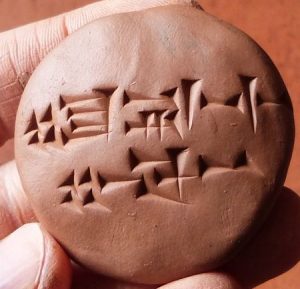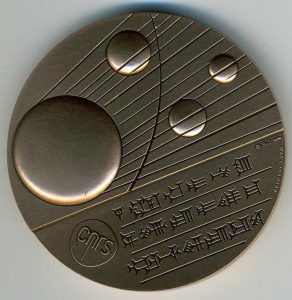4th KIM
THE 4th INTERNATIONAL MEETING AT KÜLTEPE
August 1-4, 2019
Cultural Exchanges at Kültepe and Surroundings
from 4th to the 1st Millennium BC
The data obtained during 70 years of archaeological excavations have been presented and discussed at various meetings and conferences. The major aim of the Kültepe International Meeting (KIM) series, which was held for the first time in summer 2013 and takes place every two years, is to generate synergizing interactions among researchers studying the site of Kültepe or the ancient city of Kaneš, and thus to bring together archaeologists and philologists in the scope of multidisciplinary studies, in order to present and discuss their work.
In line with the same objectives, the 4th Kültepe International Meeting (KIM) takes place on August 1-4, 2019 at Kültepe. It gathers the archaeologists and experts collaborating with Kültepe excavations and the philologists who are working on specific archives. This meeting is organized in two sessions:
- Work in progress in history, philology, art history and all the sub-disciplines of archaeology and archaeometry.
- Cultural Exchanges at Kültepe and Surroundings from 4th to the 1st Millennium BC: Archaeological and philological data have shown that Kültepe was in close contacts with its neighbors since the earliest periods. The main objectives of this session is to highlight and discuss these interactions that concern not only Kültepe but also the entire area covered by the Assyrian trade network, using both archaeological and textual sources.

Programme
Thursday, August 1st
8:15 Buses leave Kayseri
8:45 – 9:00 Registration at Kültepe
9:00 – 9:30 Conference Opening, Welcome and Introduction: Fikri Kulakoğlu, Cécile Michel & Guido Kryszat
Session 1: Sealing and Writing Chair: Guido Kryszat
9:30 – 10:00 Nejat & Zeynep Bilgen: Seyitömer Mound Early Bronze Age IIIb Cylindrical Seals
10:00 – 10:30 Néhémie Strupler & Andreas Schachner: Broken and kept: Sealing practices in Ḫattuš
10:30 – 11:00 Coffee break
11:00 – 11:30 Jan Gerrit Dercksen: OA scribal education in its wider, Mesopotamian context, with particular emphasis on practical vocabularies and their usefulness to Assyrian pupils
11:30 – 12:00 Wiebke Beyer: Learning in Old Assyrian families?
12:00 – 13:30 Lunch
Session 2: New Discoveries at Kültepe Chair: Adam Anderson
13:30 – 14:00 Kazuya Shimogama (Speaker), Ryoichi Kontani, Akinori Uesugi, Yuji Yamaguchi & Fikri Kulakoğlu: Deep Sounding in Search for the Earliest Levels at Kültepe: New Results and the Early Bronze Age Ceramic Sequence in the North of Kültepe
14:00 – 14:30 Fikri Kulakoğlu: Two Recent Collective finds at Kültepe: Alabaster İdols and Figurines Discovered in the EBA Monumental Buildings
14:30 – 15:00 Evren Yazgan, Nihal Çevik, Cihan Ay, & Fikri Kulakoğlu: Petrographical and Mineralogical Studies of the Stone Tools Excavated at Kültepe
15:00 – 15:30 Coffee break and poster session
Session 3: Kültepe People (1st part) Chair: Cécile Michel
15:30 – 16:00 Handan Üstündağ & Mehmet Somel: Application of ancient DNA (aDNA) analysis in the reconstruction of population structure at Kültepe/Kanesh
16:00 – 16:30 Jan Jakob de Ridder: There will be blood? Assyrian-Anatolian relations observed through ethnic designation
16:45 – 18:30 Guided Tour to the Kültepe Mound
Friday, August 2nd
9:15 Buses leave Kayseri
Session 3: Kültepe People (2nd part) Chair: Cécile Michel
10:00 – 10:30 Xiaowen Shi: A Microscopic Observation on Anatolian Archives and Their Social Networks: the Case of Peruwa
10:30 – 11:00 Adam Anderson: Mixed-Method Approaches for Prosopographical Analysis: the co-location of people, places and things in the Kültepe Archives
11:00 – 11:15 Coffee break
Session 4: Jewels and their Use Chair: Luca Peyronel
11:15 – 11:45 Yılmaz Rıdvanoğulları & Fikri Kulakoğlu: Lead rings and ingots discovered at Kültepe-Kanesh Karum: Jewellery or swap tool?
11:45 – 12:15 Cécile Michel: “I will fix a toggle pin on your breast” – New data about toggle pins in the Old Assyrian sources
12:15 – 12:45 Önder Ipek: Jewellery in Hittite Art and a new discovery: The Çitli Golden Armlet
12:45 – 14:15 Lunch
Session 5: Cultural Exchanges Chair: Jan Jakob de Ridder
14:15 – 14:45 Luca Peyronel & Agnese Vacca: When different worlds meet: exchange networks in Anatolia and Northern Levant during the 3rd millennium BC
14:45 – 15:15 Sudo Hiroshi: Canaanean blades from Kültepe, Central Anatolia: Reconsidering the trade of domestic items in the Early Bronze Age
15:15 – 15:30 Coffee break and poster session
15:30 – 16:00 Guido Kryszat: Look to the West – New Horizons on early Assyrian History
16:00 – 16:30 Adam Anderson: Untangeling the ‘Ušinalam Affair’: contextualizing a sparse series of cross-cultural exchanges
16:45 – 18:30 Guided Tour to the Lower Town of Kültepe
Saturday, August 3rd
9:15 Buses leave Kayseri
Session 6: Kültepe and Cappadocia Chair: Selim Ferruh Adalı
10:00 – 10:30 Çetin Şenkul e.a.: Genesis of Beyşehir Occupation Phase: Understanding Socio-Environmental Systems of Anatolia and Interactions from Kültepe-Kaniş
10:30 – 11:00 Emin Candansayar: Geophysical Studies conducted at Kültepe
11:00 – 11:30 Abdullah Hacar: Cultural Exchanges in Cappadocia during Chalcolithic and Early Bronze Age: recent results of the archaeological survey in south western Cappadocia
11:30 – 11:45 Coffee break
11:45 – 12:15 Nancy Highcock: The Early and Middle Bronze Ages at Kınık Höyük, Niğde: New Results from Southern Cappadocia
12:15 – 12:45 Mehmet Akif Günen: Presentation of Kültepe excavation area with augmented reality
12:45 – 14:00 Lunch
Session 7: The Later Periods Chair: Fikri Kulakoğlu
14:00 – 14:30 Amir Gilan: Kaneš in Hittite Historical Consciousness
14:30 – 15:00 Selim Ferruh Adalı: Reflections on the Late Assyrian Dry Phase in Iron Age Anatolia
15:00 – 15:30 Coffee Break and poster session
15:30 – 16:00 Mustafa H. Sayar: Connections between Cilicia and Cappadocia during the first half of the Ist millennium BC
16:00 – 16:30 Burcu Tüysüz: Preliminary Remarks on Black Glazed Pottery Discovered at Kültepe
16:30 – 18:00 All: General discussion (Publication of the Proceedings, Ongoing research etc.)
Sunday, August 4th
Excursion to Kayalıpınar and Kuşaklı excavation sites (A. Müller-Karpe)
Programme to be downloaded here
Abstracts to be dowloaded here

